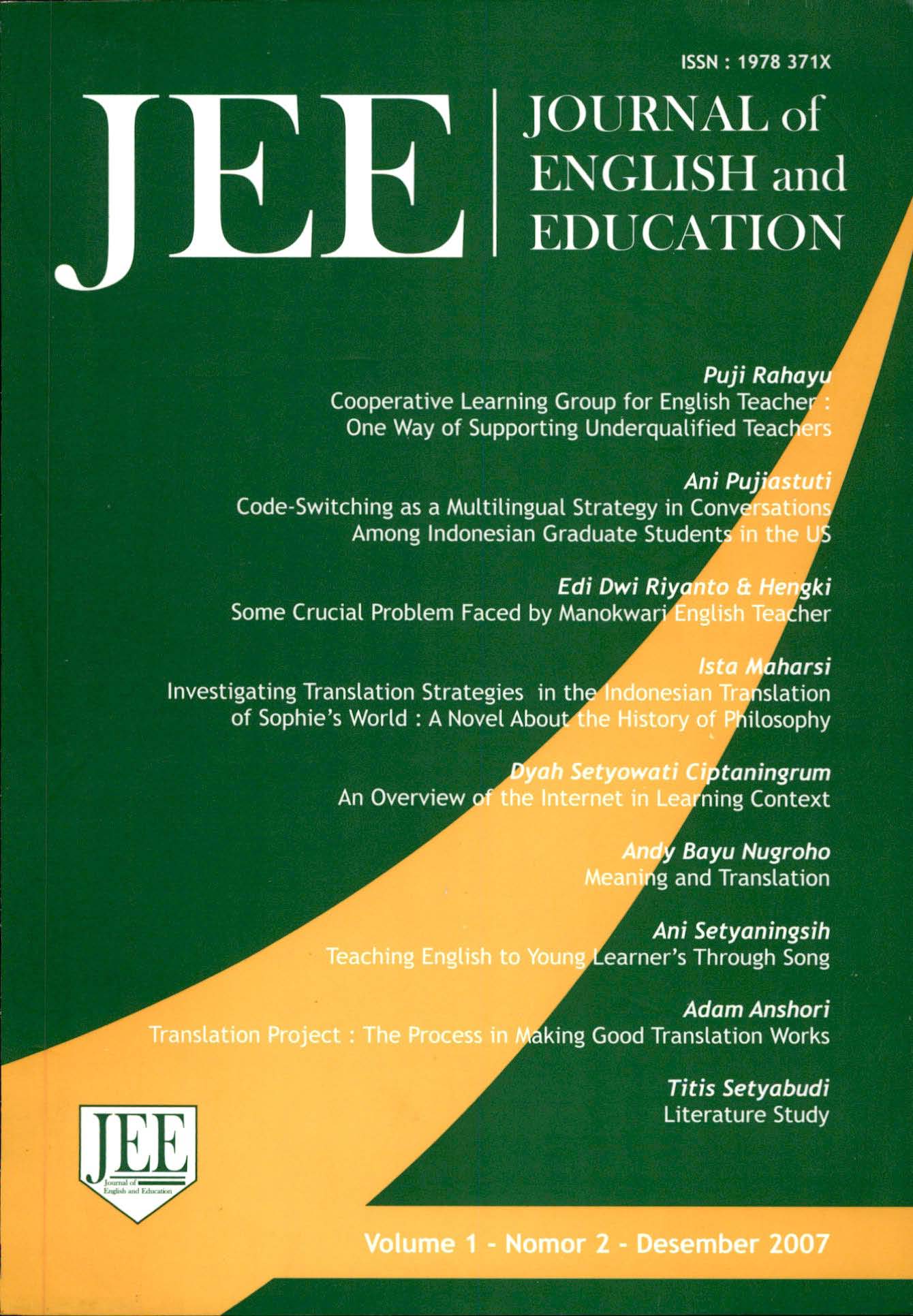Main Article Content
Abstract
Translation is an effort of finding equivalent meaning of a text into the second language. We emphasis meaning equivalence since in translation meaning is the object to be rendered from the source language text into the target language text. In this case, translator is faced with a text as units of meaning in the form of sets of words or sentences.
The main question in translation is of meaning which always appears in the process of translation, not translation as a product of the process. Translating a text from the source text(ST) must consider the closest natural equivalent meaning, it implies that the meaning of the target text must be equivalent with that of the source.
Meaning is classified into two kinds, referential meaning and connotative meaning. A translator must be aware of which meaning is possibly intended by the author. Beside, it should also be paid attention on the components embedded in a certain unit of meaning. By understanding the components of meaning of the source language expressions a translator can make the best decision related to the components.
Keywords
Article Details
Copyright (c) 2016 JEE, Journal of English and Education

This work is licensed under a Creative Commons Attribution-ShareAlike 4.0 International License.
Authors who publish with this journal agree to the following terms:
- Authors retain copyright and grant the journal right of first publication with the work simultaneously licensed under a Creative Commons Attribution-ShareAlike 4.0 International License that allows others to share the work with an acknowledgment of the work's authorship and initial publication in this journal.
- Authors are able to enter into separate, additional contractual arrangements for the non-exclusive distribution of the journal's published version of the work (e.g., post it to an institutional repository or publish it in a book), with an acknowledgment of its initial publication in this journal.
- Authors are permitted and encouraged to post their work online (e.g., in institutional repositories or on their website) prior to and during the submission process, as it can lead to productive exchanges, as well as earlier and greater citation of published work (See The Effect of Open Access).

